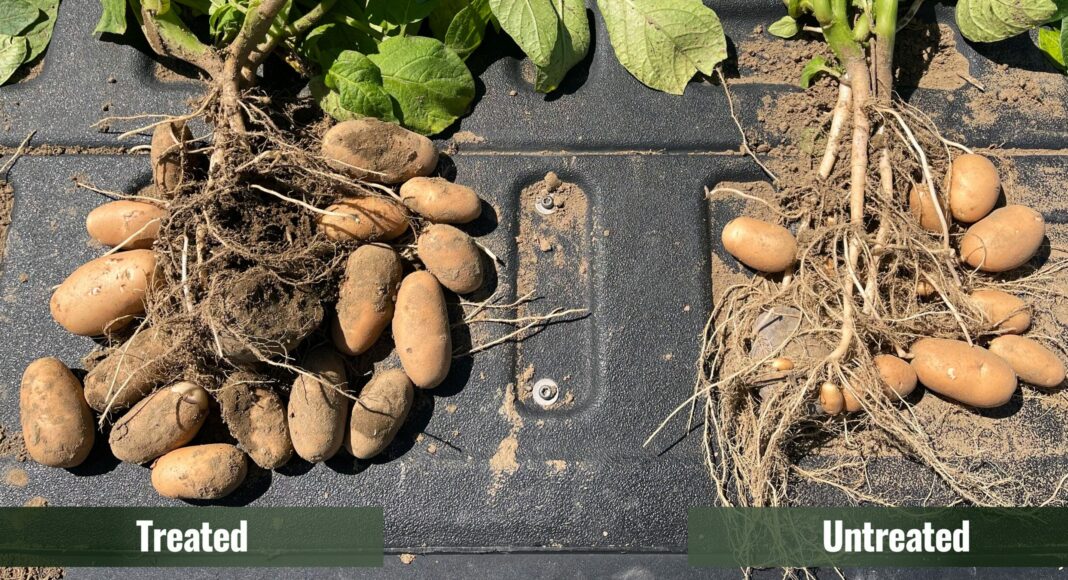Last month, I told you about Paul — a 20 plus year veteran of the fresh market industry who achieved double his average marketable yield after fumigating with chloropicrin (the active ingredient in Strike). If you haven’t read that article, check out his story here. Since it was published, I’ve had several calls from other growers keen to capture similar results in their own fields. As I’ve told each of them, impressive marketable yield gains are absolutely achievable from Strike. That said, though Strike is extremely effective, it’s not a stand-alone, silver bullet, one-application solution. Rather, as Paul proves, Strike is one key part of a whole management system.
Strike and soil fumigants have been misperceived in the past as killing everything in the soil. Instead, Strike selectively manages detrimental bacteria and pathogens (including common scab, verticillium and contributors to early die complex) and at the same time supports beneficial microorganisms called saprophytes (nature’s nutrient recyclers).
Chloropicrin and healthy saprophytes are two points on an interconnected triangle — the third is cover cropping. All three support soil health independently but, together, they achieve much more than the sum of their individual benefits.
For best results, I recommend potato producers follow Paul’s lead. He alternates potato and cover crops in a two-year rotation. In the fall before a potato season, he knocks down the cover crop, then almost immediately fumigates. The fumigation clears the soil of pathogens and harmful bacteria and also bolsters saprophyte populations. Fed by the decaying cover crop, the saprophytes cycle the nutrients back into the soil, front-loading the soil with plant-available nutrients for the growing season ahead.
Paul admits he’s had to fundamentally change his management system as he shifts towards this new kind of sustainability- and soil health-focused production. Effectively integrating Strike and cover cropping is sort of like ‘relearning’ how to farm, he says, and there’s more learning still to come. But he’s excited to be breaking out of his old routine, learning new things about the financial future of his farm.
At our most recent meeting, he and I talked about additional management changes he might try to optimize production further. Plants expected to yield high should be given a little extra space in-row. Fertilizer calculations will require extra consideration. While doubling yield does require more fertilizer, he won’t need to apply double the fertilizer as healthy soil is a much more efficient nutrient cycler. And, Paul is already thinking about incorporating different cover crops (i.e.: red clover or other legumes) to support even more soil health.
The effort of changing his system isn’t just coming back in higher yield, Paul says. It’s about freedom: freedom to choose his destiny, freedom to be more efficient, freedom to make more profit, freedom to grow the farm business.
Related Articles
Ontario Potato Farmer Notches 100% Yield Increase








